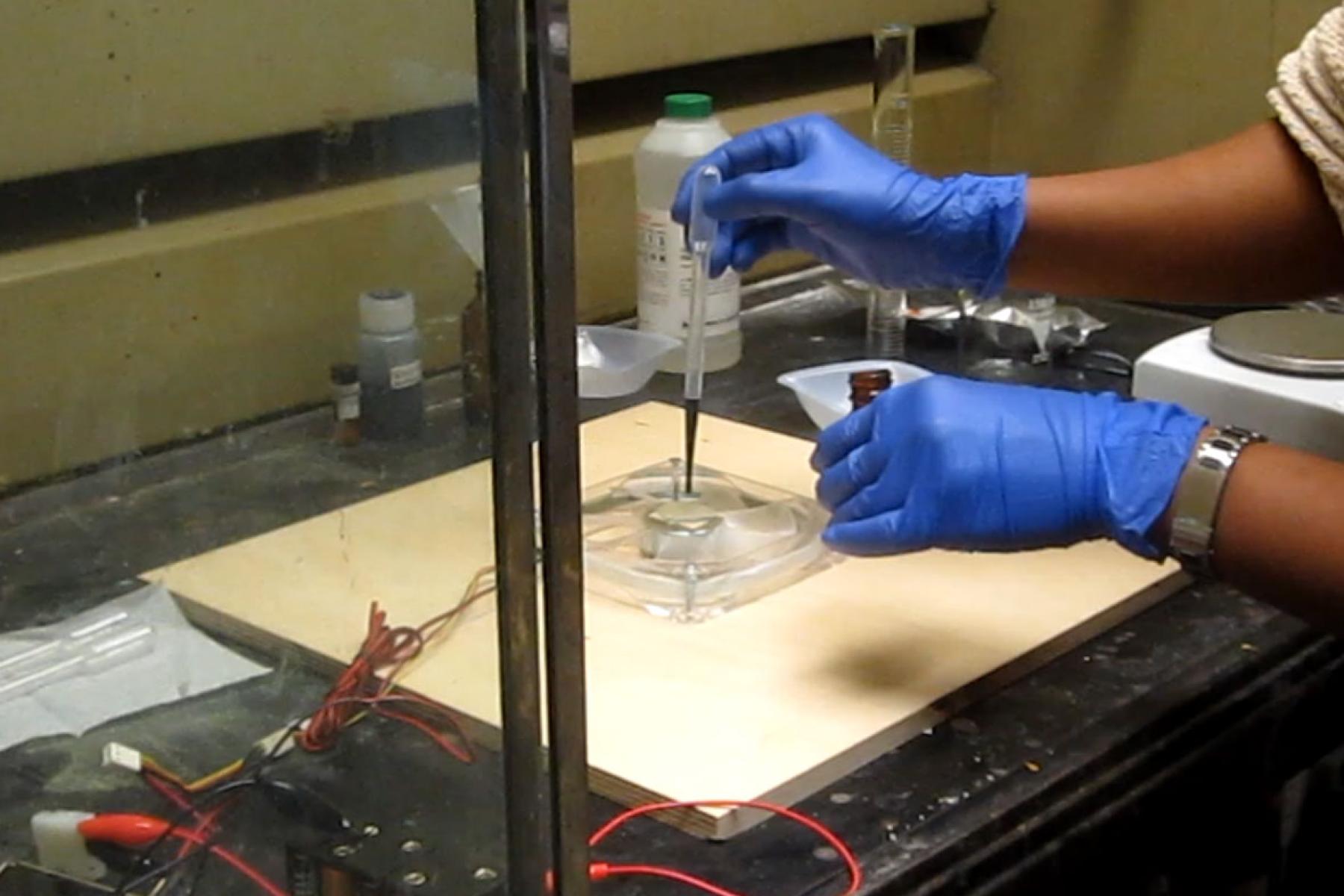DESCRIPTION
In this cart demo, visitors learn about organic light-emitting diodes (OLEDs). Prior to presenting this demo, an OLED should be made in a chemistry lab. This OLED is shown to visitors during the cart demo. During the demo, visitors learn how OLEDs work and what devices currently use OLEDs. Additionally, this activity includes a demonstration of spin coating, which is a process used to make OLEDs.
DESCRIPTION
In this cart demo, visitors learn about organic light-emitting diodes (OLEDs). Prior to presenting this demo, an OLED should be made in a chemistry lab. This OLED is shown to visitors during the cart demo. During the demo, visitors learn how OLEDs work and what devices currently use OLEDs. Additionally, this activity includes a demonstration of spin coating, which is a process used to make OLEDs.
OBJECTIVES
BIG IDEA
In this activity, visitors learn about organic electronics and how they are changing the display industry. Visitors discover that there are many advantages to organic electronics and that OLEDs are already used in many consumer electronics. Visitors also learn what spin coaters are and why they are used.
LEARNING GOALS
That many consumer devices now use OLEDs
The advantages and disadvantages of OLEDs
What organic materials are
What a spin coater is
NANO CONTENT MAP
Nanometer-sized things are very small, and often behave differently than larger things do.
Scientists and engineers have formed the interdisciplinary field of nanotechnology by investigating properties and manipulating matter at the nanoscale.
Nanoscience, nanotechnology, and nanoengineering lead to new knowledge and innovations that weren't possible before.
DOWNLOAD FILES
Credits
Lawrence Hall of Science
Developed for the NISE Network with funding from the National Science Foundation under Award Numbers 0532536 and 0940143. Any opinions, findings, and conclusions or recommendations expressed in this product are those of the authors and do not necessarily reflect the views of the Foundation.
Creative Commons Attribution Non-Commercial Share Alike 3.0 United States (CC BY-NC-SA 3.0 US).
View more details

NISE Network products are developed through an iterative collaborative process that includes scientific review, peer review, and visitor evaluation in accordance with an inclusive audiences approach. Products are designed to be easily edited and adapted for different audiences under a Creative Commons Attribution Non-Commercial Share Alike license. To learn more, visit our Development Process page.

